Detect early-stage crop diseases with field-tested AI, built to spot real infections fast, not wait for visible damage or lost yield.
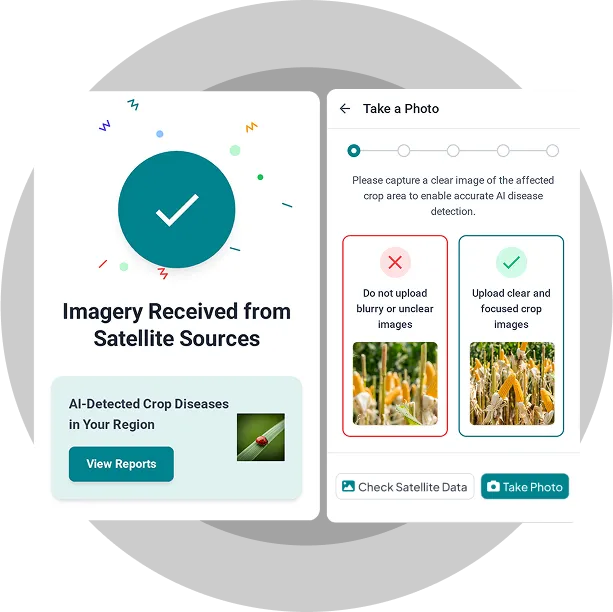











AI crop disease detection supports real-time issue tracking, treatment planning, and disease history logging across fields.
Diseases are often only identified after visible damage has occurred, limiting response options and increasing crop vulnerability.
Limited time and large acreage make it easy to overlook early signs and infected areas.
Treating the wrong disease causes wasted sprays, delays recovery, and sometimes harms the crop.
Lack of traceability makes it hard to learn from previous outbreaks or defend against compliance audits.
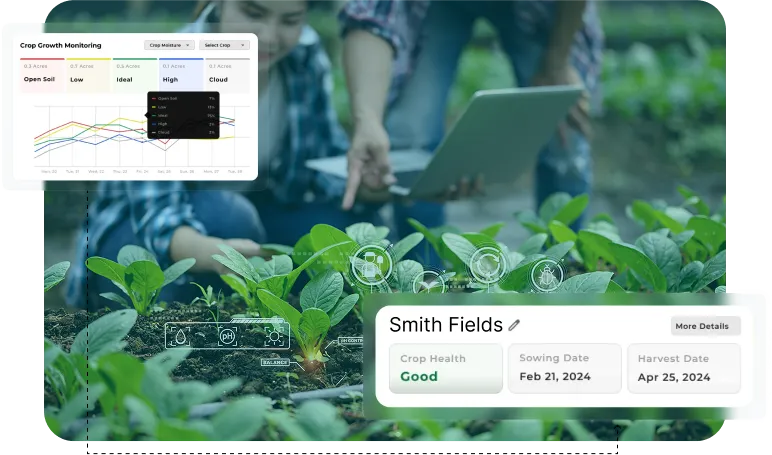
Built for modern farms, the crop disease detection system merges AI, imaging, and scouting for actionable, early-stage insights.
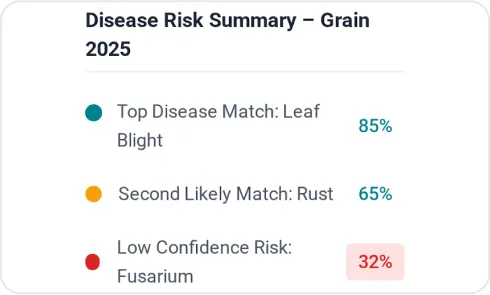
The AI model returns the top 3 likely diseases with confidence percentages to assess risk level and treatment urgency.
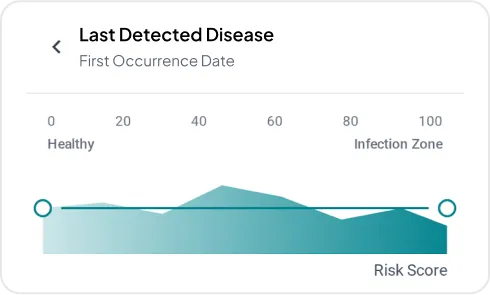
Transforms raw aerial imagery into visual disease maps, highlighting high-risk zones across fields.
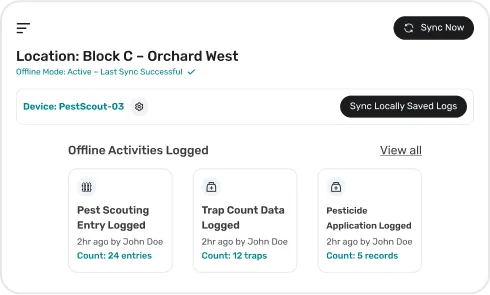
Allows scouts to diagnose and log cases in remote areas without internet, syncing to the platform when reconnected.
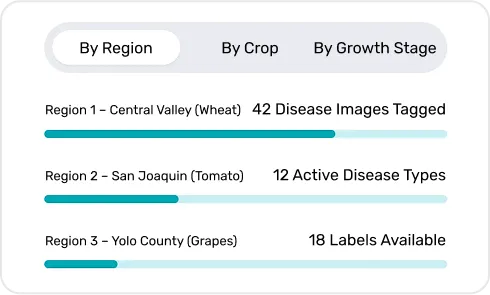
Built-in image bank organized by crop, disease, and growth stage to help validate field findings visually.
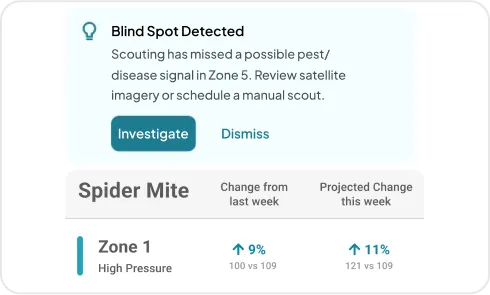
Automatically generate disease-based scouting routes and alert scouts when they enter predefined risk zones.
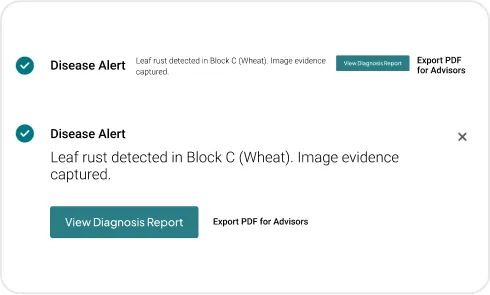
Generate instant PDFs that include diagnosis, treatment applied, images, timestamps, and outcomes for external stakeholders.
Use AI crop disease detection to monitor more acres, more accurately, without more boots on the ground.
The modules turn crop disease detection into a connected process, not scattered tasks across tools or teams.
Monitor disease trends across fields using satellite, drone, or mobile imagery with real-time risk visualization overlays.
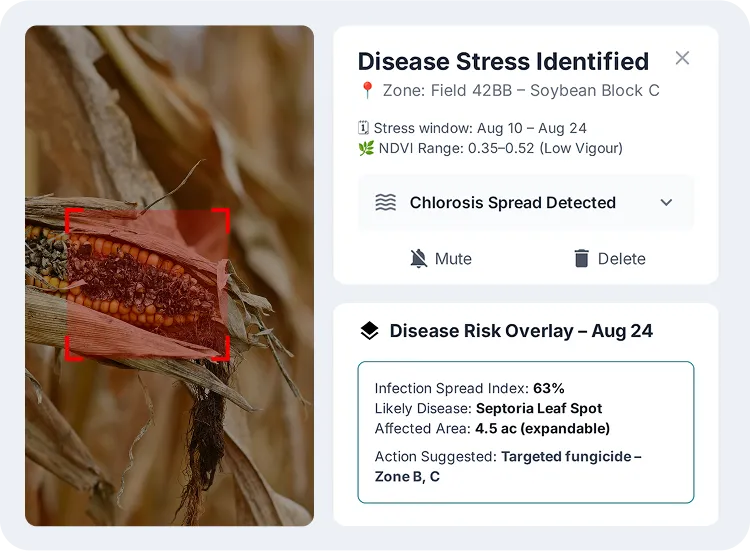
Diagnose crop diseases from field images using pre-trained models and custom labels for local disease variants.
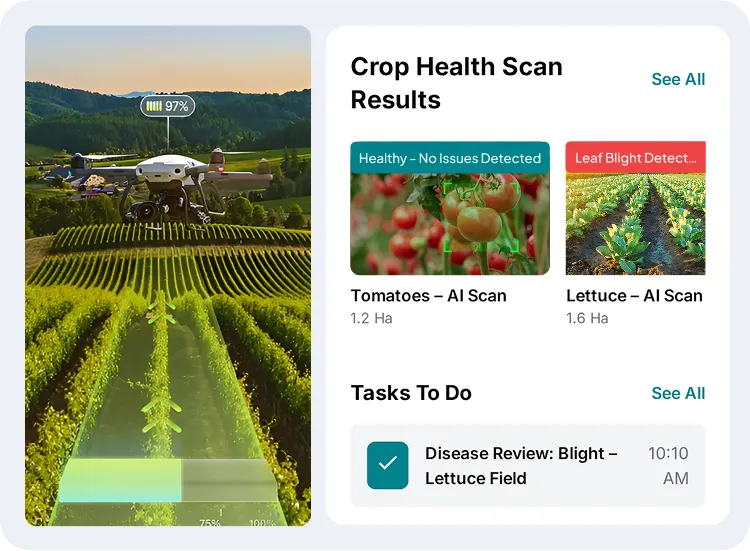
Assign scouting tasks, capture field-level observations, and validate detected issues with structured, timestamped inputs.
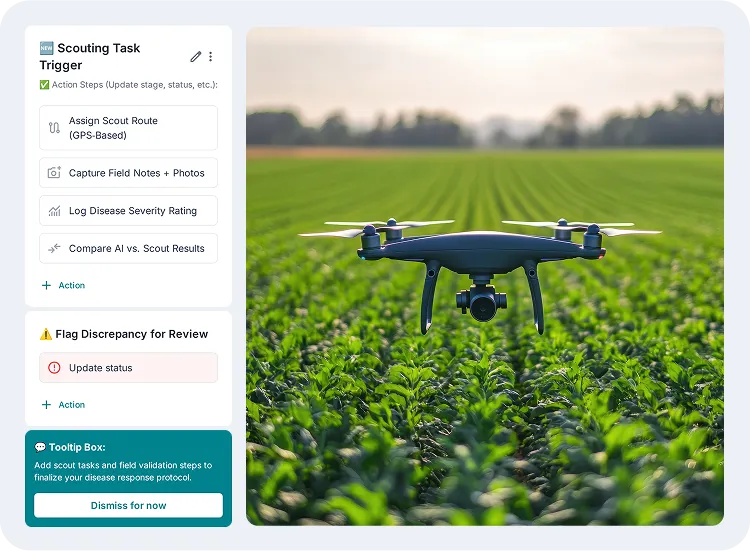
Translate confirmed detections into actionable treatment plans, with PHI/REI checks and input compatibility.
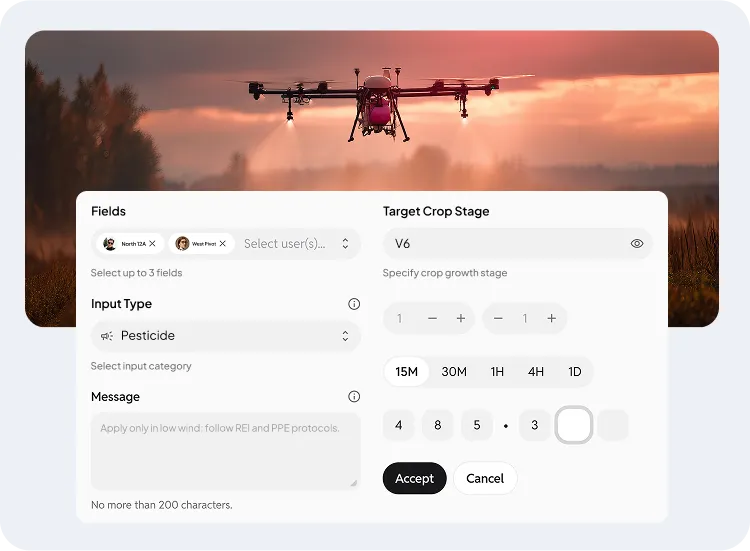
Store and analyze historical disease records to identify seasonal trends and refine long-term disease response strategies.
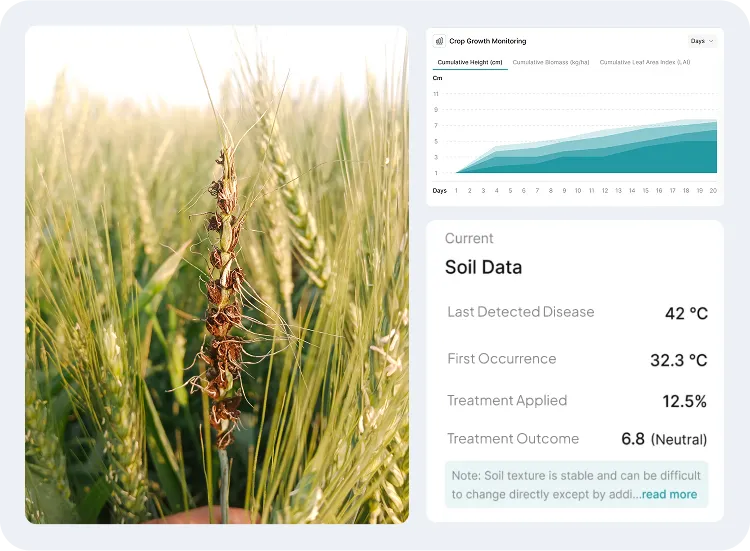
Crop disease detection using machine learning ensures accuracy across plant types,
canopy structures, and environmental conditions.
AI crop disease management helps monitor large-acreage crops like corn, wheat, and soybeans for early, field-wide disease outbreaks.
Detect citrus canker, greasy spot, and fungal stress early with leaf-level analysis tailored to citrus tree symptoms.
Identify disease pressure in almond, pistachio, and walnut orchards with canopy-aware detection tuned to nut crop lifecycles.
Catch leaf and soil-borne diseases in high-turnover crops like tomatoes, peppers, and brassicas before they spread fast.
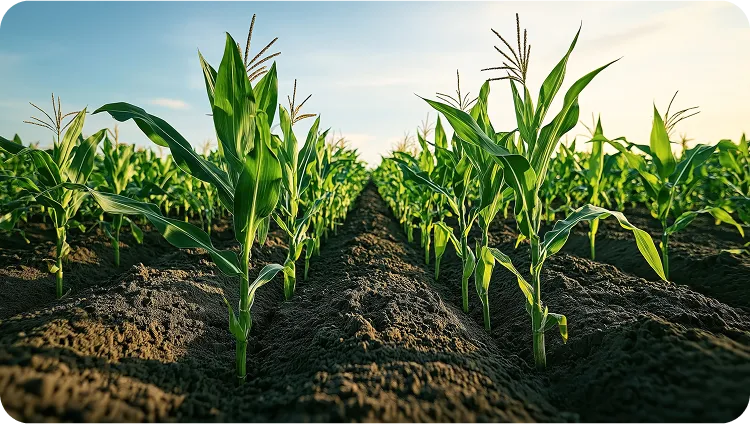
Purpose-designed for harvest operations, harvest management software connects teams, tracks inventory, and delivers real-time insights from field to dispatch.
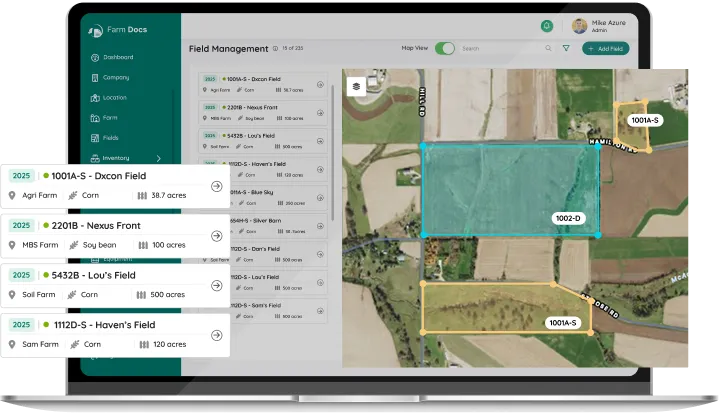
Real-world examples of leading crop businesses showcasing the impact of our custom crop management software.


Read what our clients say about their experiences and the difference our solutions have made for them.
Vice President Information Technology
VP of Operations
IT Project Manager
Systems Administrator
Product Manager
Crop disease detection using AI by analyzing images of leaves or fields to identify early signs of infection. Instead of relying solely on visual scouting, AI models process patterns in leaf damage, discoloration, and distribution to detect symptoms that may not be obvious to the human eye. This helps farmers take action sooner, apply treatments more precisely, and avoid widespread yield loss.
The system supports disease detection using smartphone photos, drone footage, and satellite imagery. Smartphone imaging is useful for close-up leaf analysis, drone imaging helps assess canopy-wide stress at the field level, and satellite images support broader disease monitoring across large acreage. Each method provides a different layer of visibility and complements various stages of crop growth and disease spread.
The system utilizes convolutional neural networks (CNNs) trained on thousands of labelled images of crop diseases. These models learn to recognize patterns, such as color changes, leaf texture, and lesion shape, associated with specific diseases. The more varied and high-quality the training data, the better the model performs in real-world scenarios with different crops, lighting conditions, and disease stages.
Yes. Once a disease is detected, the system can suggest treatment options aligned with crop stage and disease severity. These recommendations may include chemical, biological, or cultural practices. It can also integrate with existing disease control protocols, helping farm managers align detection with safe re-entry intervals (REI), pre-harvest intervals (PHI), and local regulations.
To train a reliable crop model, large datasets of labeled images are required. These images must include healthy and diseased samples across different crops, stages of infection, and environmental conditions. Labeled datasets should reflect real-world variability, such as lighting changes, leaf angle, and overlapping symptoms, to build a model that generalizes well in the field.
The system is trained on diverse image samples that include variations in lighting, crop variety, and disease progression. This ensures it can detect diseases under cloudy skies, filtered sunlight, and across multiple plant species. It also learns to distinguish between similar symptoms caused by different stressors, reducing false positives and increasing reliability in field use.
In real-world conditions, accuracy depends on image quality, disease stage, and crop variety. While controlled datasets may show accuracy above 90%, real-field performance typically ranges between 75 and 88%, depending on how well the model is trained for local crops and environmental conditions. Ongoing retraining with localized data improves these benchmarks over time.
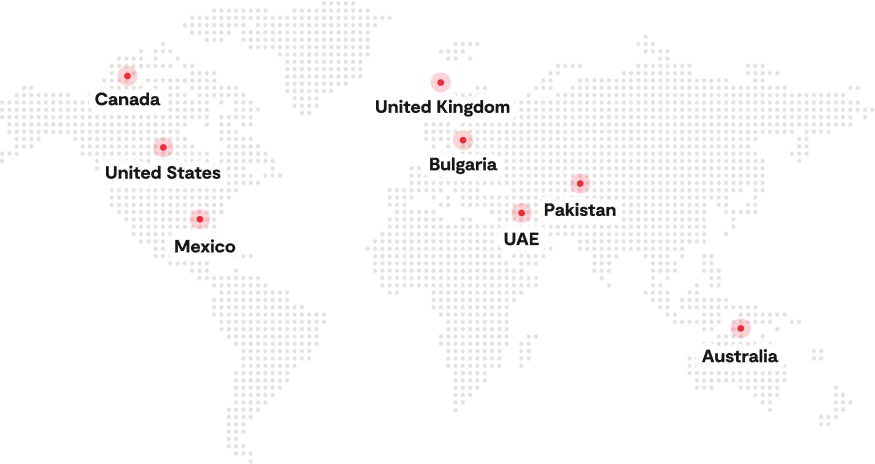
160 Bovet Road, Suite # 101, San Mateo, CA 94402 USA
6701 Koll Center Parkway, #250 Pleasanton, CA 94566
2 – 105 Consumers DR Whitby ON L1N 1C4, Canada
49 Bacho Kiro Street, Sofia, 1000, Bulgaria
Export House, Cawsey Way, Woking, Surrey, GU21 6QX
Amado Nervo #2200 Edificio Esfera 1 piso 4 Col. Jardines del Sol CP, 45050, Zapopan, Jalisco, Mexico
C/- Prime Partners Level 4 1 James Place NORTH SYDNEY New South Wales 2060, Australia
Folio3 FZ LLC, UAE, Dubai Internet City, 1st Floor, Building Number 14, Premises 105, Dubai, UAE
Folio3 Tower, Plot 26, Block B, SMCH Society, Main Shahrah-e-Faisal, Karachi.
First Floor, Blue Mall 8-R, MM Alam Road Gulberg III, Lahore
Corporate 7 by Maaksons, Executive Block, Civic Center 1, Gulberg Green, Islamabad
© 2025 Folio3 Software Inc. All Rights Reserved.
Get a Free Consultation Within 24 Hours, with a No-Obligation Ballpark Estimate
Error: Contact form not found.